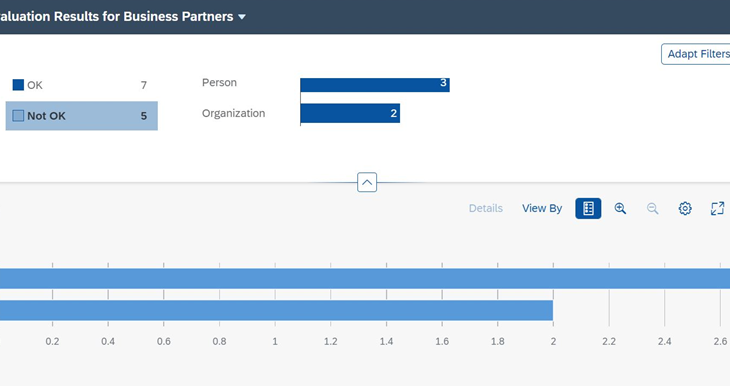We can connect to the services for SAP Master Data Governance, Cloud edition from SAP Business Technology Platform (SAP BTP). This is a futuristic idea which we should focus on. In this new blog post, I will give the outline for the end-to-end process for connecting and using the SAP MDG Cloud edition by utilizing the SAP BTP features.
Since May 2021 SAP MDG Cloud Edition on SAP BTP is available. It gives us the scope for master data management initiative in the cloud with a minimal barrier for entry and an option to build additional master data governance scenarios at our own pace.
- Run data anywhere
- Reduce data redundancy
- Connect and understand data
Initially, SAP Master Data Governance, cloud edition focuses on Business Partner data. SAP Master Data Governance, cloud edition provides fast time to value and is planned as a low entry point for new SAP MDG customers while offering existing SAP MDG implementations a non-disruptive deployment option to build to a more granular system network for master data management.
PREREQUISITES
- Get your access for SAP Business Technology Platform (SAP BTP)
- Select the service SAP Master Data Governance, cloud edition and create.

3. Configure Entitlements, Role Collections and Roles



4. Go to the application

STEP BY STEP GUIDE
Step 1 – Create a new BP with Central Governance
Start the app “Manage Business Partner Central Governance” and create a new organization



Click on OK and review the data in the following screen. You can add more information in this form such as Tax Numbers and Bank Details. We call this information core master data attributes. Click on Save and Submit
Go back to your home screen and start the app “My Inbox”

Click on Approve to successfully create a new Business Partner in SAP MDG Cloud Edition using Central Governance.
Step 2 – Consolidate & Onboard new BP’s
Please be informed that below sample records include parts which will be used to show features of the MDG Cloud Edition like:
- potential duplicates dependent on company name and addresses within the source file
- potential duplicates dependent on company name and addresses against active area
- data issues which will be identified by a DQM evaluation run in step 3

Start the app “Manage Imports – Business Partners”

Click on Create button and enter a Source System ( or select “Import without Source System”)
Click on “Upload” and select your file. Click on Save.

Click Consolidate button and enter a description
In the next window: Start the process
Review the Initial Check Step and click continue

Review the matching and approve open match groups


Continue with the process
Complete the consolidation with the Validation and Activation step

Now you can start the app “Manage Business Partners – Central Governance” and you will see the newly onboarded data.


Step 3 – Evaluate Data Quality and review the results

After max 60 minutes of Step 2 you can start the app “Evaluation results”
Review the incorrect records and you will find the records from Step 2 because one predefined DQM rule checks if a region is maintained.

The onboarded records are not having region maintained

Step 4 – Remediate incorrect records with mass processing
You can trigger a mass processing process from the “Evaluation results”

Select the records and start the mass processing. You can also use the visual filters to do a drill down.
In the edit step add a region value to each of the records and Save it and hit the Submit button.

Start again the app “My Inbox” and review the newly received task, Approve the task


Wait for some minutes until the next DQM evaluation run is triggered and check in the result that the incorrect records from step 3 has been remediated.
Moving towards the future:
SAP API Business Hub
For all business applications, SAP Master Data Integration will become the single point of access to master data. The applications creating new master data will just inform SAP Master Data Integration about the new master data record. SAP Master Data Integration is planned to involve SAP Master Data Governance, cloud edition if this system is configured as the “owner” for that master data in SAP Master Data Integration. In the case that SAP Master Data Governance, cloud edition detects a duplicate, it will merge the core attributes of the new record with the appropriate existing record and thus create an updated best record. Thereafter, SAP Master Data Governance, cloud edition will inform SAP Master Data Integration about the updated (original) record and notify it to deprecate the newly created record and update the key mapping.












